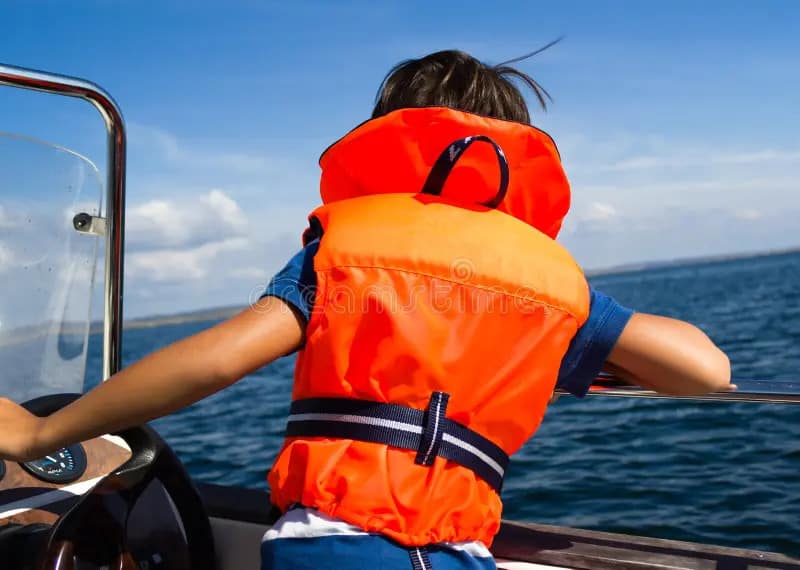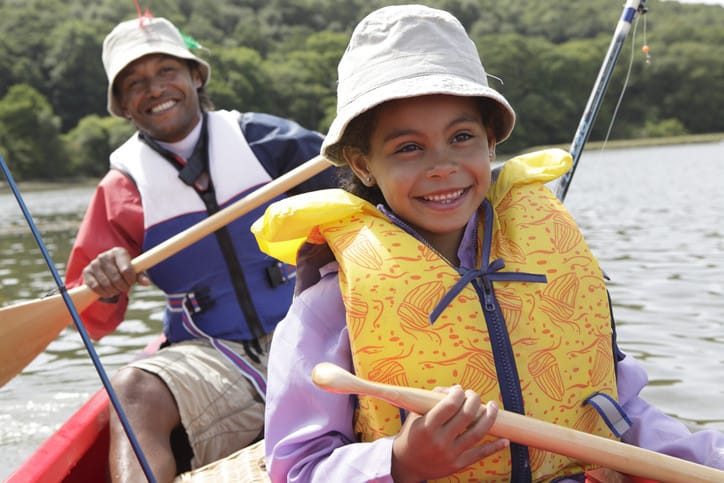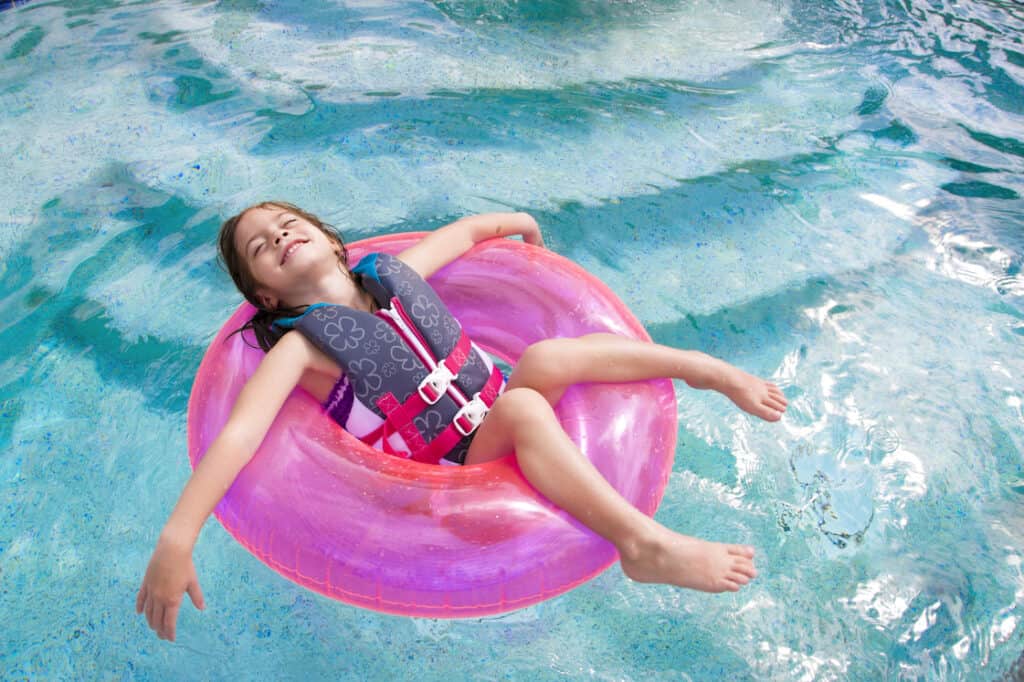Puddle jumpers and life jackets are two popular flotation devices that can help keep individuals safe in the water. While both serve the same purpose, they have distinct differences that make them suitable for different situations and age groups.
Understanding the differences between these devices can help individuals make informed decisions about which one to use for different water activities.
Puddle jumpers are typically designed for children who are learning to swim. They are made of foam and have arm floats and a chest piece that provides buoyancy.
Life jackets, on the other hand, are designed for individuals of all ages and come in a variety of styles and sizes. They are typically made of buoyant materials and have a collar that keeps the head above water.
When it comes to choosing between a puddle jumper and a life jacket, safety standards and regulations should be considered. Both devices must meet certain safety standards and regulations to ensure they can provide adequate flotation and keep individuals safe in the water.
Additionally, the type of water body in which the device will be used should also be considered, as some devices may be more suitable for calm waters, while others may be better for rougher waters.
Key Takeaways
- Puddle jumpers are designed for children learning to swim, while life jackets are suitable for individuals of all ages.
- Safety standards and regulations must be considered when choosing a flotation device.
- The type of water body and age group should also be considered when choosing a device.
Understanding Puddle Jumpers and Life Jackets

When it comes to water safety, two common options are puddle jumpers and life jackets. Both are designed to keep individuals afloat in the water, but they have some key differences.
1. Puddle Jumpers
Puddle jumpers are a type of personal flotation device (PFD) that is designed for children. They typically consist of a neoprene vest with attached arm floaties. Puddle jumpers are meant to be worn around the chest, with the arm floaties providing additional buoyancy.
One advantage of puddle jumpers is that they are often more comfortable for children to wear than traditional life jackets. They also allow for greater freedom of movement in the water, which can be beneficial for children who are learning to swim.
However, it is important to note that puddle jumpers are not approved by the U.S. Coast Guard as a type of PFD. While they may provide some buoyancy, they are not designed to meet the same safety standards as a life jacket.
2. Life Jackets
Life jackets, also known as personal flotation devices (PFDs), come in a variety of types. Type II and Type III jackets are the most common for recreational use.
Type II jackets are designed for calm waters and are best suited for situations where rescue is likely to be quick. They provide more buoyancy than Type III jackets but are less comfortable to wear for extended periods of time.
Type III jackets are designed for general boating activities and are often more comfortable to wear than Type II jackets. They provide less buoyancy than Type II jackets but are still effective at keeping individuals afloat in the water.
It is important to choose a life jacket that is appropriate for the intended activity and the individual’s size and weight. Always look for jackets that are approved by the U.S. Coast Guard.
In summary, while puddle jumpers may be more comfortable and allow for greater freedom of movement, they are not approved by the U.S. Coast Guard as a type of PFD. Life jackets, on the other hand, come in a variety of types and are designed to meet safety standards set by the U.S. Coast Guard.
Safety Standards and Regulations

When it comes to safety standards and regulations, both puddle jumpers and life jackets must meet certain requirements. In the United States, the Coast Guard is responsible for setting and enforcing these standards.
The Coast Guard requires that all personal flotation devices (PFDs), including life jackets and puddle jumpers, be U.S. Coast Guard-approved. This means that the device has been tested and meets specific performance requirements for buoyancy, strength, and durability.
Additionally, the Coast Guard requires that PFDs be labeled with certain information, including the size and weight range of the intended user, the manufacturer’s name and address, and the Coast Guard approval number.
While both puddle jumpers and life jackets must meet these same safety standards, there are some differences in the specific requirements for each type of device. For example, life jackets must provide a minimum of 15.5 pounds of buoyancy for adults, while puddle jumpers must provide a minimum of 7 pounds of buoyancy for children weighing between 30 and 50 pounds.
It’s important to note that just because a device is U.S. Coast Guard-approved does not guarantee that it is the best option for every situation. It’s important to consider factors such as the age and size of the user, the type of water activity being undertaken, and the conditions of the water when choosing a PFD.
In summary, both puddle jumpers and life jackets must meet U.S. Coast Guard safety standards and regulations. It’s important to choose the appropriate PFD for the specific situation to ensure the highest level of safety for all users.
Usage in Different Water Bodies
When it comes to choosing between a puddle jumper and a life jacket, it is important to consider the type of water body you will be in. Both options have their advantages and disadvantages depending on the water environment.
1. Swimming Pools
Puddle jumpers are a popular choice for swimming pools, especially for children who are learning to swim. They provide buoyancy and support, allowing children to feel more comfortable in the water.
Life jackets can also be used in swimming pools, but they may be too bulky and restrictive for some swimmers.
2. Lakes and Rivers
In open bodies of water such as lakes and rivers, life jackets are the preferred choice for safety reasons. They provide superior buoyancy and can keep a person afloat even if they are unconscious.
Puddle jumpers may not provide enough buoyancy in these situations, and they may not be able to keep a person’s head above water.
3. Boats
Both puddle jumpers and life jackets can be used on boats, but life jackets are the recommended option. In case of an emergency, a life jacket can provide the necessary buoyancy to keep a person afloat until help arrives.
Puddle jumpers may not be suitable for all boat activities, such as water skiing or wakeboarding.
4. Open Water/Ocean
When it comes to open water or the ocean, life jackets are the only option. The currents and waves in these environments can be unpredictable, and a life jacket provides the necessary buoyancy to keep a person afloat. Puddle jumpers are not designed for these types of water bodies and may not provide enough support in rough waters.
In conclusion, both puddle jumpers and life jackets have their advantages and disadvantages depending on the water environment. It is important to consider safety first and choose the appropriate flotation device for the activity and water body.
Considerations for Different Age Groups

When it comes to choosing between a puddle jumper and a life jacket, it’s important to consider the age of the person who will be wearing it. Here are some factors to keep in mind for different age groups:
1. Infants and Toddlers
For infants and toddlers, a life jacket is the only safe option. Puddle jumpers are not recommended for children under 30 pounds, which means they are not suitable for infants or most toddlers.
Additionally, infants and toddlers have a higher risk of accidental drowning due to their limited swimming ability, so a properly fitting and Coast Guard-approved life jacket is essential.
2. Preschoolers
Preschoolers who are comfortable in the water and have some swimming ability may be able to use a puddle jumper. However, parents should still consider a life jacket for added safety, especially if the child will be in deep water or rough conditions.
3. Youth and Adults
Older children, teenagers, and adults may have the option of using either a puddle jumper or a life jacket, depending on their swimming ability and the conditions of the water they will be in.
However, it’s important to note that puddle jumpers are not designed to keep a person’s head above water in all situations, so a life jacket may still be the safer choice.
In all cases, it’s important to make sure the life jacket or puddle jumper fits properly and is worn correctly. A poorly fitting or improperly worn flotation device can be dangerous, regardless of the age of the wearer.
Understanding Risks and Precautions
When it comes to water safety, there are many risks and precautions to consider. One of the biggest risks is drowning, which can happen to anyone, even experienced swimmers.
It’s important to understand the risks associated with different types of water activities, such as boating, swimming, and fishing, and to take appropriate precautions to minimize those risks.
Wearing a life jacket is one of the most important precautions you can take when participating in water activities. A life jacket can help keep your head above water, even if you become unconscious.
It can also provide a false sense of security, so it’s important to remember that it’s not a substitute for swimming techniques or proper supervision.
Another important precaution is to always be aware of your surroundings and the potential for emergencies. If someone becomes unconscious or is in danger, it’s important to know how to rescue them safely. This may involve calling for help or performing CPR, depending on the situation.
It’s also important to be aware of the risks associated with different types of water activities. For example, boating accidents can be caused by a variety of factors, including operator error, weather conditions, and equipment failure.
Swimming in open water can also be risky, especially if you’re not familiar with the area or the water conditions.
In summary, understanding the risks associated with water activities and taking appropriate precautions is essential for staying safe and avoiding accidents. Whether you’re boating, swimming, or fishing, always wear a life jacket, be aware of your surroundings, and know how to respond in case of an emergency.
Choosing the Right Device
When it comes to water safety, choosing the right device can be a crucial decision. Parents want to ensure their children are safe while swimming or boating, and there are several options available, including life jackets, puddle jumpers, and swim vests.
Life jackets are buoyant flotation devices that are designed to keep the wearer afloat in the water. They come in many different styles and sizes, including ring-shaped and cushion-style jackets.
Life jackets are ideal for boating and other watercraft activities, and they are also a good choice for children who are not yet confident swimmers.
Puddle jumpers are a type of swim aid that is designed to help children learn to swim. They consist of a flotation device that wraps around the child’s chest and arms, providing buoyancy and support.
Puddle jumpers are not recommended for boating or other watercraft activities, as they are not designed to keep the wearer afloat in the water.
Swim vests are another option for children who are learning to swim. They provide buoyancy and support, but they are not as restrictive as life jackets. Swim vests are a good choice for children who are confident swimmers and are learning to swim in deeper water.
When choosing a device, it is important to consider the child’s age, swimming ability, and the activity they will be participating in. Life jackets are the best choice for boating and other watercraft activities, while swim vests and puddle jumpers are ideal for learning to swim.
In summary, when it comes to water safety, choosing the right device is essential. Parents should consider their child’s swimming ability and the activity they will be participating in when selecting a device. Life jackets are ideal for boating and other watercraft activities, while swim vests and puddle jumpers are great options for learning to swim.
Importance of Swimming Lessons
Swimming lessons are an essential part of learning how to swim. They provide individuals with the necessary skills and knowledge to swim safely and confidently. With proper swim classes, individuals can learn the correct techniques and form to swim efficiently and effectively.
Swimming lessons can also help individuals develop a love for swimming and water activities. By building confidence in the water, individuals are more likely to enjoy swimming and other water-related activities. Additionally, swim lessons can help individuals learn about water safety and how to respond in emergency situations.
Swimming lessons are available for individuals of all ages and skill levels. Beginner swim lessons can help individuals learn the basics of swimming, including floating, kicking, and breathing techniques. More advanced swim lessons can help individuals refine their skills and improve their technique.
Overall, swimming lessons are an important part of learning how to swim and staying safe in the water. By taking swim lessons, individuals can develop the necessary skills and knowledge to enjoy swimming and other water-related activities safely and confidently.
Enjoying Water Activities Safely
When it comes to enjoying water activities, safety should always be a top priority. Whether you’re swimming, sailing, or just splashing around in a puddle, taking the proper precautions can help prevent accidents and injuries.
One of the most important safety measures is wearing a life jacket. A life jacket can help keep you afloat if you become tired or injured while in the water. It’s especially important for children and inexperienced swimmers to wear a life jacket at all times.
If you’re sailing, it’s also important to have a properly equipped boat. This includes having enough life jackets for everyone on board, as well as other safety equipment like flares and a first aid kit.
In warm weather, it’s important to take extra precautions to avoid heat exhaustion and dehydration. Make sure to drink plenty of water, wear sunscreen, and take breaks in the shade if you start to feel overheated.
Finally, always be aware of your surroundings and any potential hazards. This could include rocks or other obstacles in the water, or dangerous currents that could pull you under.
By following these simple safety tips, you can enjoy water activities with confidence and peace of mind.
If you enjoy this article, you might enjoy our post on 5 Best Inflatable Water Slides for Kids 2023
Frequently Asked Questions
What are the best Coast Guard approved toddler life jackets?
The best Coast Guard approved toddler life jackets are those that are specifically designed for toddlers and meet all the safety requirements set by the Coast Guard. Some of the popular options include the Stearns Puddle Jumper, O’Neill Infant Superlite, and Stohlquist Nemo.
What is the difference between a puddle jumper and a life vest?
A puddle jumper is a type of flotation device that is designed for children who are learning to swim. It is made of foam and has arm floats attached to a chest piece. On the other hand, a life vest is a type of personal flotation device that is designed to keep a person afloat in the water. It is made of buoyant material and has a neck collar and waist strap to keep it securely in place.
Are puddle jumpers safe for toddlers?
Puddle jumpers are generally safe for toddlers when used properly and under adult supervision. However, it is important to note that they are not a substitute for a life jacket and should not be used in situations where a life jacket is required.
Can puddle jumpers be used as life jackets?
No, puddle jumpers should not be used as life jackets. They are designed for children who are learning to swim and are not intended to keep a child afloat in rough or open water.
What is the weight limit for a puddle jumper?
The weight limit for most puddle jumpers is between 30 and 50 pounds. However, it is important to check the specific weight limit of the product before purchasing it.
Why are life jackets recommended over puddle jumpers?
Life jackets are recommended over puddle jumpers because they are designed to keep a person afloat in rough or open water. They are also required by law in many situations, such as when boating or participating in water sports.
Puddle jumpers, on the other hand, are designed for children who are learning to swim and should not be relied upon in situations where a life jacket is required.

Iesha is a loving mother of 2 beautiful children. She’s an active parent who enjoys indoor and outdoor adventures with her family. Her mission is to share practical and realistic parenting advice to help the parenting community becoming stronger.
